Michelangelo Antonioni, 1964
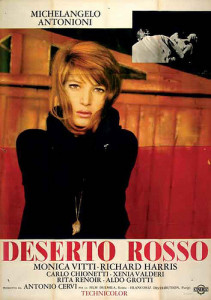
Masterpiece by Michelangelo Antonioni – his first colour film – about a woman who is not able to get over a deep life crisis and her relationship to the people and environment surrounding her. Giuliana (Monica Vitti), a young middle-class woman suffering from a deep depression, lives in the industrial area of Ravenna with her husband, Ugo (Carlo Chionetti), a detached and distant chemical engineer, with whom she has no communication, and her little son. One day she meets Corrado (Richard Harris), a colleague of her husband, whomis attracted to her and tries to help her escape her nightmare-like by having a bitter and transient affair that will not compensate her desperate need for balance.
LOCATION The film was entirely shot in Ravenna (apart from a sequence shot on the pink beach of Budelli in Sardinia).
The industrial area of Ravenna is the backdrop for most of the film. Sequences were made along the via della Baiona (the initial scene where workers protest during a march) and the Canale Candiano, where can be seen the chimney and the Hammon cooling tower of SAROM refinery belonging tomthe former petrochemical site of ANIC (now dismissed).
In a shed near the port of Porto Corsini were shot the sequence depicting the arrival of the ship as well as some footages of the pic-nic with held by Ugo, Giuliana, Corrado and some friends of theirs.
The sequences set in the marshes were shot in the Pialassa della Baiona, a brackish lagoon extending between Lamone rive and the port of Candiano.
Don Giovanni Minzoni, much-decorated army chaplain during the First World War, supported both deprived people and the relatives of the victims of the violence by fascist action squads. He was against the violent terror policies growing.y perpetrated in the Ferrara province according to the orders given by Italo Balbo, head of the police. Because of his opposition he is first threatened by Augusto Maran, a local fascist, and then beaten up to death during the night of August 23rd 1923 by a group of fascists while he was going back to his own presbytery with a friend, Enrico Bondanelli. The film retraces the history of the crime until the trial to the alleged murderers in 1925 and tries to reproduce the specific atmosphere in Argenta during the Fascist rule.
LOCATION The film was shot in Argenta.
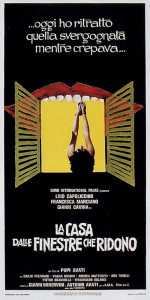
Here follows what Pupi Avati said while shooting the film: “It is an old local legend, one of those stories I heard thousands of times, when children were scared and listened to their granmothers’ tales in dismay“.
At the beginning of the ’60s in a village in the surroundings of Ferrara, a young restorer, Stefano, (Lino Capolicchio) comes here to unveil a fresco portraying Saint Sebastian mrtyrdom painted by a local naïf artist who committed cide thirty years before.
As soon as he arrives, he realizes that his presence is not well accepted and that the plaster partially covering the fresco hides a truth that many people seem scared to disclose. He is then involved in a series of of obscure events and violent deaths, therefore he starts enquirying and comes across several fishy affairs and shady situations carefully hidden in the deepest recesses of the province.
LOCATION The film was mostly shot in Comacchio, its valleys and in southern Polesine.
The sequence of Stefano’s arrival on thr ferry was shot along the Po banks of Porto Tolle and Ca’Venier.
The art nouveau villa where the Legnani sisters live and where Stefano also stays is Villa Boccaccini alla Collinara a San Giuseppe, a hamlet not far from Comacchio. It was built at the beginning of the twentieth century from a farmhouse of the eighteenth century and can still be visited today.
Several sequences were shot in Comacchio, namely in the Loggiato dei Cappuccini (corso Mazzini), in some streets of the city centre and in particular in via E. Fogli: at number 7 it is possible to recognize the facade of Albergo Italia (indoor sequences were shot i Cento) where Stefano stays.
The Valli di Comacchio are the backdrop of several film sequences. A footage was shot at Stazione Foce, where it is still possible to see the house that director Giuliano Montaldo asked as a set prop for L’Agnese va a morire, shot a few months before Avati’s film.
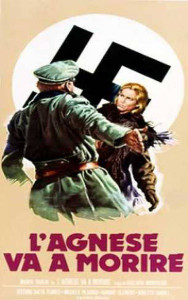
After several flops, L’Agnese va a morire is the successful trial by Giuliano Montaldo to make a film out of the novel by Renata Viganò holding the same title and which was awarded in 1948 the prestigious literary award Premio Strega after being published in several foreign languages As the book, also the film tells the story of a humble country laundress, Agnese (Ingrid Thulin), whose sick husband is deported by the Nazis because he had hosted an Italian soldier after September 8th 1943. After killing a German soldier and joining the clandestine partisan movement, the woman get increasingly more aware of what is happening ad her committment also grows more and more. She acts as a dispatch rider between the river banks and the nearby villages and also becomes a symbol of the harsh anti-fascist fight.
LOCATION The film was shot in the Valli di Comacchio area and also in the areas of Bagnacavallo and Alfonsine.
At Stazione Foce, at the entrance of the Valli di Comacchio, can still be seen the partisan barracks which were built as set prop for the film and the enlarged for script purposes.
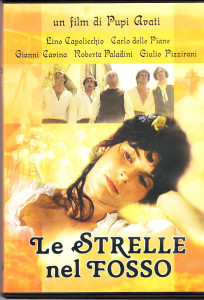
The film, a sort of surreal fantasy fairy-tale permeated of legend, is set in the eighteenth century and is about the story of a men-only familyn living in a large and isolated house in the middle of the valleys. The old father raised his four sons all by himself, without the help and support of a woman. During a summer night a miracle happens: a beautiful and young woman, Olimpia, knocks on their door. The girl is welcomed by the five men who soon fall in love with her and decide to mar her altogether. Actually this is an ancient rural ritual according to which a father and his sons can marry the same woman and live with her forever. The day after the wedding Olimpia vanishes mysteriously.
Here follow the words used by Pupi Avati to describe the moment when he finally found the perfect house for the film together with his collaborators Cesare Bastelli and Cesare Bornazzini: “A whole week spent in the valleys, along the white roads, getting on and off production cars, looking for a house in the middle of the waters that would be the centre of the plot. It seemed impossible to find it, it seemed non-existent. Then, on the last night, before leaving for Rome, resigned to the idea of falling back on other far less satisfactory solutions, the two Cesare and I went for a walk along a grass-covered bank. It was getting dark and the water colour was also turning black. We kept walking while the sun was going down. And then all of a sudden I saw it and shouted: “here it is!”
LOCATION The film was shot in the Valli Cantone and Bertuzzi, where the large farmhouse used for the film set.
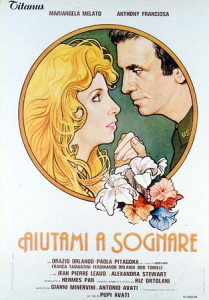
In order to escape the German bombings during the Second World War, the young window Francesca (Mariangela Melato) hides with her three daughters in her country house. Francesca loves anything coming from The US, namely music and cinema. One day an American plane lands near her villa because of a technical breakdown and she falls in love, returned, with the pilot. Once the plane is repaired the pilot flies away leaving the woman with her dreams and memories.
LOCATION The film is mostly set in two houses of the lower Po valley: Villa Sarocco in Ro and Villa Giglioli, ancient venetian style villa dating back to XV century and refurbished in the XVIII and XIX centuries in the countryside between Serravalle and Ariano along the Po di Goro.
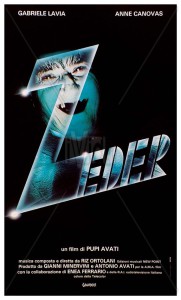
Second horror movie by Avati after La casa dalle finestre che ridono, Zeder is an atypical zombie-movie set in the provincial life of Emilia-Romagna region.
The young journalist Stefano (Gabriele Lavia) gets from his wife Alessandra (Anne Canovas) a used typewriter. Accidentally, he realizes that the tape is still engraved with some sentences types by the previous owner. He starts investiganting the text and finds out that Paolo Zeder, a scientist from the 50s had carried out mysterious studies on K lands, special areas where buried dead bodies can come back to life.
LOCATION The film was shot between Bologna and Milano Marittima.
The main nd most picturesque location is the former holiday house of Colonia Varese in Milano Marittima (viale Matteotti) (going north) a sort of small city built in 1938 with a pure Fascist architectural style, over a covered surface of 4,300 square meters and an overall volume of 62,000 cubic meters, likely to host up to a thousand boys and girls, as usual strictly sorted out in separate refectories and dormitories.
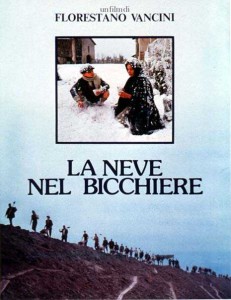
Life chronicles of a family of farmers from the lower Po valley from 1898 until 1927: three decades and three generations of people whose miserable life made of poverty, scarce food, disease, fatigue and badly paid jobs, in the beginning is only marked by alternating seasons. Later on it is overwehlmed by several problems of a much broader extent: the first wage claims of day labourers and sharecroppers, the first workers’ associations, both red and white, the Great War – leaving also in this area painful and and deep scars – the first fascist blows with a club.
LOCATION The film was shot in the Argenta area.
The house where the family of farmers starring in the film used to live is at Ca’ Rossa di Vallesanta, close to the Oasi naturale di Campotto. Currently the house is owned by the Consorzio della Bonifica Renana and it is used both for pedagogical and tourist activities. In the village of Boccaleone was rebuilt the old “Due Ponti” hamlet based on the novel by Nerino Rossi that inspired the film.

Soursweet comedy unfolding around two different levels: pathos and malice, enchantment and disenchantment, tenderness and irony. We are in the ’50s and the pastry cook Vanni Porelli (Carlo delle Piane), a simple and humble man, accepts to restore a countryside villa which is heavily decaying because of years of neglection and to throw a graduation party for the daughter of the landlady. The owner, Gaia (Aurore Clèment), a rich lady from Bologna, had once kissed Vanni, namely ten years before on the very same day Italy declared its entry into war, and as consequence he sank in a non-reciprocated love dream. The party will be a flop not because of Vanni’ fault but because of the hypocrisy and meanness of the guests.
LOCATION Several sequences were shot in the Volano area. The streets travelled by bike by the protagonists in the beginning of the film flank tha area called Valle Bertuzzi. In particular, along the via di Lido di Volano, it is still visible today the house where the father and the son go to rent their suits.
Giuseppe Bertolucci, 1988
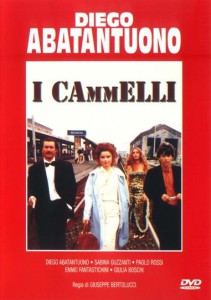
A strange convoy is travelling around the Po Delta. Camillo (Diego Abatantuomo), manager and producer of average-quality shows signs in Ferruccio Ferri, (Paolo rossi) a young and gullible guy who is very knowledgeable about camels, unbeaten champion of a quiz show “Chi ne sa di più”.The two are then accompanied by a driver who is also a jack of all trades and by a grotesque singer,(Sabina Guzzanti), secretely loved by Camillo. They leave from Carpi with a camel and cross the lower Po Valley they head for Milan where Ferruccio Ferri will join a tv quiz show.
LOCATION Several film sequences were shot in an area between Mesola, Comacchio and its valleys.
In one of the initial sequences the protagonist, Ferruccio, is chased through the Piazza del Castello di Mesola (Piazza Umberto I) and along the Po bank and then also over the famous Trepponti of the lagoon city. Later on the convoy is portrayed while travelling across the Valli di Comacchio.








